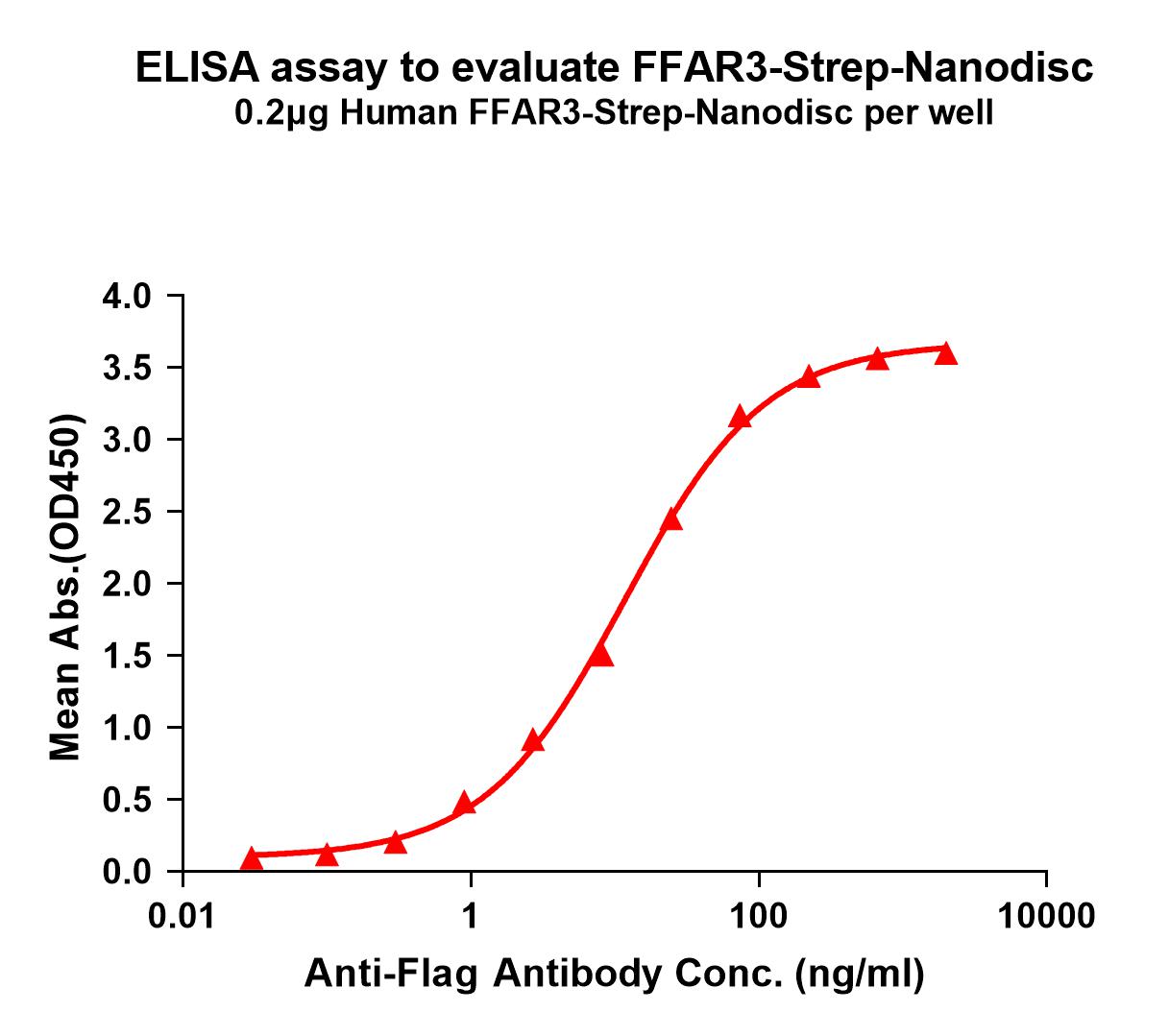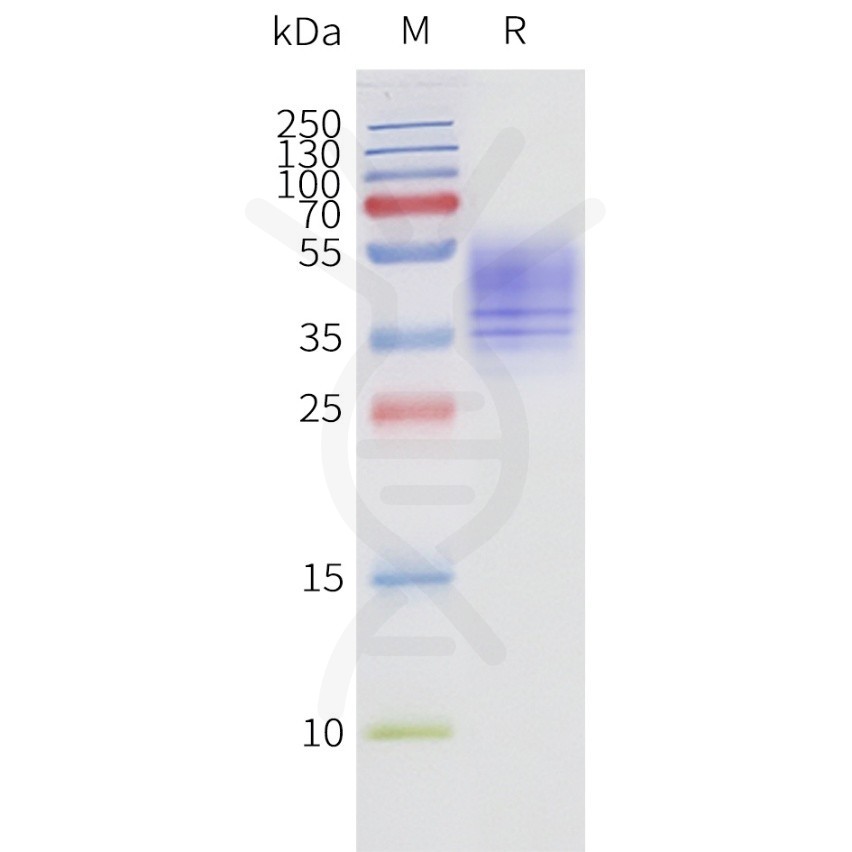| Tag | C-Flag&Strep Tag |
|---|---|
| Target | |
| Synonyms | FFA3R; GPR41; GPR42 |
| Description | Human FFAR3-Strep full length protein-synthetic nanodisc |
| Delivery | In Stock |
| Uniprot ID | O14843 |
| Expression Host | HEK293 |
| Protein Families | Druggable Genome, GPCR, Transmembrane |
| Protein Pathways | N/A |
| Molecular Weight | The human full length FFAR3-Strep protein has a MW of 38.6 kDa |
| Formulation & Reconstitution | Lyophilized from nanodisc solubilization buffer (20 mM Tris-HCl, 150 mM NaCl, pH 8.0). Normally 5% – 8% trehalose is added as protectants before lyophilization. Please see Certificate of Analysis for specific instructions. Do not use solvents with a pH below 6.5 or those containing high concentrations of divalent metal ions (greater than 5 mM) in subsequent experiments. |
| Storage & Shipping | Store at -20°C to -80°C for 12 months in lyophilized form. After reconstitution, if not intended for use within a month, aliquot and store at -80°C (Avoid repeated freezing and thawing). Lyophilized proteins are shipped at ambient temperature. |
| Background | G protein-coupled receptor that is activated by a major product of dietary fiber digestion, the short chain fatty acids (SCFAs), and that plays a role in the regulation of whole-body energy homeostasis and in intestinal immunity. In omnivorous mammals, the short chain fatty acids acetate, propionate and butyrate are produced primarily by the gut microbiome that metabolizes dietary fibers. SCFAs serve as a source of energy but also act as signaling molecules. That G protein-coupled receptor is probably coupled to the pertussis toxin-sensitive, G(i/o)-alpha family of G proteins. Its activation results in the formation of inositol 1,4,5-trisphosphate, the mobilization of intracellular calcium, the phosphorylation of the MAPK3/ERK1 and MAPK1/ERK2 kinases and the inhibition of intracellular cAMP accumulation. |
| Usage | Research use only |
| Conjugate | Unconjugated |
Human FFAR3-Strep full length protein-synthetic nanodisc
Price: 10 μg $810.00 ; 50 μg $3960.00 ; 100 μg $7200.00
Product Data Dima FAQ
Images Dima FAQ

Figure 1. Elisa plates were pre-coated with C-Flag&Strep Tag FFAR3-Strep-Nanodisc (0.2μg/per well). Serial diluted anti-Flag monoclonal antibody solutions were added, washed, and incubated with secondary antibody before Elisa reading. From above data, the EC50 for anti-Flag monoclonal antibody binding with FFAR3-Strep-nanodisc is 11.71ng/ml.

Figure 2. Human FFAR3-Strep-Nanodisc, C-Flag&Strep Tag on SDS-PAGE
Related Products
Full Length Transmembrane Proteins
SKU: FLP100237 Target: FFAR3
This product is no longer available. Click here to view recommended products

